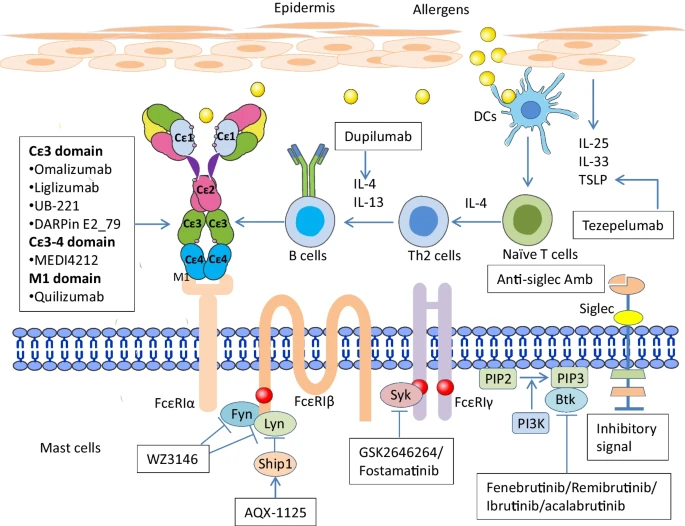Clinical Reviews in Allergy & Immunology 63, 431–446 (2022)
Abstract
Mast cells originate from the CD34+/CD117+ hematopoietic progenitors in the bone marrow, migrate into circulation, and ultimately mature and reside in peripheral tissues. Microbiota/metabolites and certain immune cells (e.g., Treg cells) play a key role in maintaining immune tolerance. Cross-linking of allergen-specific IgE on mast cells activates the high-affinity membrane-bound receptor FcεRI, thereby initiating an intracellular signal cascade, leading to degranulation and release of pro-inflammatory mediators. The intracellular signal transduction is intricately regulated by various kinases, transcription factors, and cytokines. Importantly, multiple signal components in the FcεRI-mast cell–mediated allergic cascade can be targeted for therapeutic purposes. Pharmacological interventions that include therapeutic antibodies against IgE, FcεRI, and cytokines as well as inhibitors/activators of several key intracellular signaling molecues have been used to inhibit allergic reactions. Other factors that are not part of the signal pathway but can enhance an individual’s susceptibility to allergen stimulation are referred to as cofactors. Herein, we provide a mechanistic overview of the FcεRI-mast cell–mediated allergic signaling. This will broaden our scope and visions on specific preventive and therapeutic strategies for the clinical management of mast cell–associated hypersensitivity reactions.


No comments:
Post a Comment